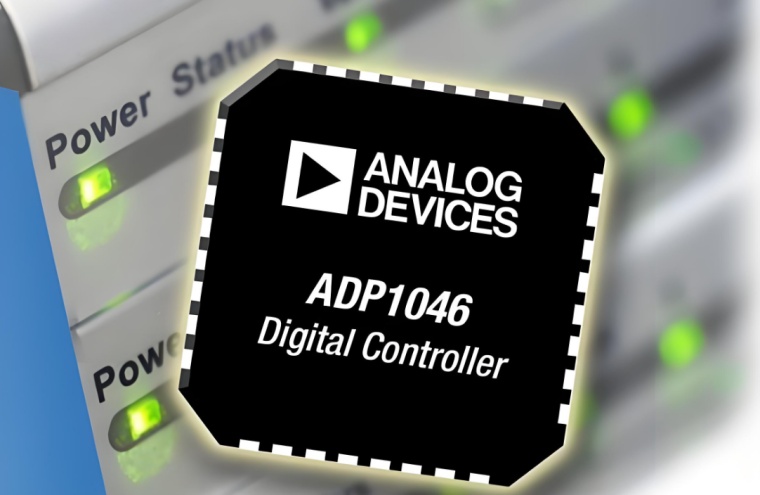**ADM1066ACPZ: A Comprehensive Guide to the Sequencer and System Supervisory Circuit**
In the complex landscape of modern electronic systems, particularly within telecommunications infrastructure, networking hardware, and advanced computing platforms, precise power sequencing and system monitoring are not just beneficial—they are absolutely critical. The **ADM1066ACPZ** from Analog Devices stands as a pivotal solution in this domain, integrating a highly configurable sequencer and a comprehensive suite of supervisory functions into a single 40-lead LFCSP package. This article delves into the core functionalities, applications, and key considerations for this powerful integrated circuit (IC).
**Understanding the Core Functionality: Sequencing and Supervision**
At its heart, the **ADM1066ACPZ is a highly flexible power supply sequencer and monitor**. Its primary role is to manage the orderly power-up and power-down of multiple voltage rails in a system. Improper sequencing can lead to latch-up conditions, excessive inrush current, or even permanent damage to sensitive components like FPGAs, ASICs, and processors. The ADM1066ACPZ eliminates this risk by allowing designers to program precise timing delays and thresholds for up to ten power supplies.
The device achieves this through its **six sequencer inputs (SEQIN1–SEQIN6) and ten programmable open-drain sequencer outputs (SEQOUT1–SEQOUT10)**. The sequencer logic can be configured to respond to external signals, enabling complex, multi-stage sequencing routines. Furthermore, it features **11 internal, high-accuracy analog-to-digital converters (ADCs)** that continuously monitor system voltages. These ADCs are connected to a multitude of input pins, allowing for real-time measurement of up to 11 voltage rails.
**Key Features and Capabilities**
* **Programmable Thresholds and Delays:** Every monitored input has user-definable undervoltage (UV) and overvoltage (OV) thresholds. The device can be programmed to respond to a fault by holding the sequence, retrying, or initiating a controlled shutdown.
* **Nonvolatile Memory (NVM):** All configuration settings are stored in on-chip NVM. This allows the device to operate immediately upon power application without requiring external software, making it a truly autonomous hardware-based solution.
* **Fault Logging:** The IC includes a fault register that logs the status of all monitors at the time of a fault condition. This is an invaluable feature for debugging and root-cause analysis in field-deployed systems.
* **Programmable Logic:** The device incorporates a simple yet powerful programmable logic array, enabling the creation of custom combinatorial and sequential logic functions based on its input signals. This adds a layer of customization for complex system requirements.
* **Communication Interface:** The **ADM1066ACPZ is controlled and configured via a standard I²C-compatible interface**. This allows a master processor to read status information, retrieve fault logs, and adjust parameters in real-time if necessary.
**Typical Application Circuit**

In a typical application, the sequencer outputs (SEQOUTx) are connected to the enable or shutdown pins of DC-DC converters and voltage regulators. The inputs (SEQINx and VHx) are connected to the power rails they are assigned to monitor. The device autonomously executes the pre-programmed sequence: it enables the first regulator, waits for its output to stabilize and reach the correct threshold, and then proceeds to enable the next regulator in the chain. This process continues until all rails are confirmed to be stable and within specification.
**Design Considerations**
When implementing the ADM1066ACPZ, careful attention must be paid to:
* **Threshold Accuracy:** While the internal references are highly accurate, system accuracy depends on the resistor dividers used on the monitor inputs.
* **Power-Up Timing:** The device itself requires a supply voltage (VDD). The sequencing of its own power must be considered in the overall system power architecture.
* **Fault Response Strategy:** The desired response to a fault (e.g., immediate shutdown, retry, or ignore) must be carefully programmed for each monitor to ensure system safety and reliability.
**ICGOODFIND**
**ICGOODFIND**: The ADM1066ACPZ is an indispensable component for architects designing high-reliability, multi-rail power systems. Its deep integration of monitoring, sequencing, and programmability into a single chip simplifies board design, enhances system robustness, and provides critical diagnostic capabilities. It represents a superior choice for applications where power integrity is non-negotiable.
**Keywords:**
1. **Power Sequencing**
2. **System Supervisor**
3. **Voltage Monitoring**
4. **Programmable Logic**
5. **Fault Logging**
